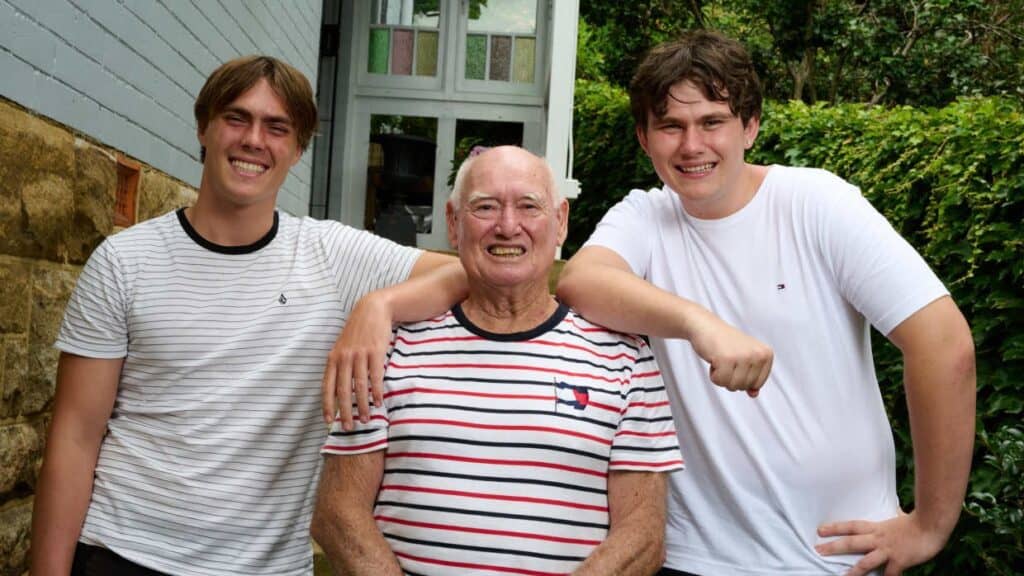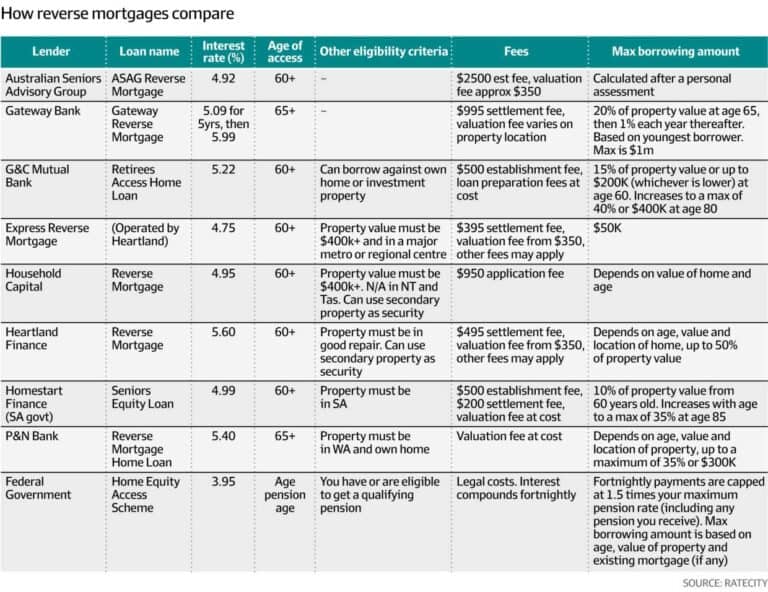21 January 2022
While wealthier retirees are tapping into their home equity to help family, advisers warn others of small print conditions that could reduce CentreLink benefits.
Richard Doherty, 76, a retired managing director of a marketing company, is tapping into the equity of his Sydney home to help pay for his grandchildren’s secondary school education.
Doherty, who has lived in Mosman for nearly 40 years, says a reverse mortgage has been an “easy and comfortable” way to maintain his lifestyle and draw down instalments every term to pay fees.

It is a scenario the federal government is keen to perpetuate with a “three-pillar” retirement system that aims to keep retirees living in their homes through a combination of the age pension, compulsory superannuation and voluntary savings, including the family home.
In addition to a rebranded government scheme, there are eight private sector options that provide homeowners with a range of borrowing options, conditions, fees and forms of payment.
The accompanying table, compiled by RateCity, which monitors financial products, compares what is on offer. A reverse mortgage borrower can take the funds from the equity in a property as a lump sum, regular income stream, cash reserve or a combination of all three.
When the property is sold, the lender is repaid for the amount borrowed plus interest and fees.
The interest is typically compounded daily and applied monthly, says Sally Tindall, RateCity’s research director. Interest on the federal government’s scheme is calculated fortnightly, Tindall adds.

The schemes were overhauled about three years ago by regulators amid complaints from borrowers that they were too complex and expensive. Many were axed by major lenders, such as CBA and Macquarie Bank, worried about rising costs and increased regulation.

In the past two years, the amount borrowed via reverse mortgages has fallen by more than $350 million to about $2.29 billion, which compares with total Australian mortgage debt of more than $2 trillion, according to a government analysis.
But the government is keen for retirees such as Doherty to draw down on the rising value of their homes, which after the latest property boom is easily the most valuable financial asset for a majority of families.
According to Household Capital, which provides Doherty’s reverse mortgage, about 4.5 million retirees have equity in their home that is four to five times larger than their super savings. On average, male Baby Boomers have about $150,000 in super savings and women have about $80,000.
Tapping into their home equity could help many retirees achieve a comfortable retirement, which requires $62,083 a year for couples and $43,901 for singles, according to the Association of Super Funds of Australia, the nation’s peak super body.
Children living at home longer
For wealthier retirees, it is being used for school fees, helping with children’s home deposits or distributing wealth during the life of the benefactor, often at a time in their children’s lives when they need it most.
According to an analysis by research group Finder, high property costs mean children are living at home longer, with only one in three having bought their first home by 30. By comparison, more than 60 per cent of Baby Boomers had purchased their first home at the same age.
The federal government recently rebranded its scheme by cutting interest rates from 4.5 per cent to 3.95 per cent and improving drawdown terms, such as allowing home-owning seniors aged 66 and over to receive a non-taxable fortnightly payment. This scheme is available to retirees eligible for the age pension.
That means a couple on the age pension with a house worth about $2.05 million will be able to top up their fortnightly age pension of $1458 by $729, boosting their annual cashflow to $56,885, according to Brendan Ryan, principal of financial adviser Later Life Advice.
“That $729 a fortnight is a loan of $18,900 for the year, or less than 1 per cent of the property’s total value,” says Ryan. “Put another way, for a property increasing in value by between 5 and 10 per cent a year, it could make sense to take less than 1 per cent as a payment to help with the cost of living.
“The increasing value of your property could be substantially more than the pension drawdown and increase the value of your estate more effectively than downsizing to a lower property, paying costs and forgoing an age pension.”
The accompanying table shows that conditions, terms and costs vary widely, which means borrowers need to seek experienced, specialist financial advice to identify a provider that best suits their requirements.
Kaine Adamson, a senior manager at P&N Bank, says its scheme provides borrowers with increased flexibility and higher payments than on offer from the government plan.
“Our scheme allows customers to unlock the equity in their home as they need it or as a lump sum up to the value of $300,000,” he adds.
But Ryan warns that a large lump sum could affect Centrelink-assessable assets and result in a reduced age pension.
Interest rates range from the government’s 3.95 per cent to Heartland Finance’s 5.6 per cent while charges can include upfront payments, legal costs, valuation and settlement fees.
There is also a wide variation in the amount that can be borrowed and caps on loans as the borrower gets older.
“That is typically based on the value and location of the property, age of applicants and whether they have an existing mortgage,” Tindall says. “The lender needs to ensure that when the property is sold, there is money to cover the loan.”
All reverse mortgages taken out after September 18, 2021, have “negative equity” protection that prevents the lender from demanding more than the property’s market value.
Original article found at the AFR
Household Capital Pty Limited ACN 618 068 214 is the issuer of the information on this website. Household Capital Pty Limited ACN 618 068 214, Australian Credit Licence 545906, is the Servicer for the credit provider Household Capital Services Pty Limited ACN 625 860 764. HOUSEHOLD CAPITAL, HOUSEHOLD TRANSFER, LIVE WELL AT HOME and the Star Device are trademarks of Household Capital Pty Ltd






